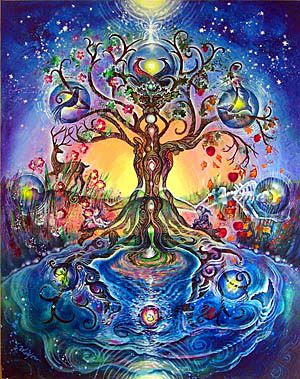Dear Integral Meditators,
What can you do when your mind feels spiky, insecure and uncomfortable? The article below explores a contemplative approach that involves working consciously with the scale of your mind.
In case anyone missed it, you can see the schedule of live classes in May at Integral Meditation Asia HERE.
In the spirit of being comfortable with spikiness,
Toby
 Big Enough, Specific Enough (Dealing with spiky minds)
Big Enough, Specific Enough (Dealing with spiky minds)
One of the simplest ways to change the way you experience a difficult or challenging state of mind and emotion is to make your mind bigger.
To use an image; if think about your difficult of challenging minds as being like number of spiny sea urchins (sea picture). If your mind is small, let’s say like the size of your average black bin liner, and you put the sea urchins in there then it is going to feel extremely uncomfortable. Because of the smallness of the space, it feels like you can’t move around in your mind without getting a painful spine sticking into you somewhere. However, if you make your mind as big as you can, say big like the ocean, then you can accommodate the ‘spiny sea urchins of your mind’ very comfortably. This is not because you have changed them in any way; it’s just that your mind is so much bigger that it can happily accommodate the sea urchins without experiencing any discomfort. This is in the same way that there are literally millions of actual sea urchins in the ocean, but they don’t cause the ocean discomfort in any way.
A practical perspective
So, lets’ say over the last week I’ve been feeling uncomfortable about traditional human concerns; financial worries, ageing, career uncertainty, romantic insecurity. Using the approach I have described above I would not try and overcome the inner issues I am facing by changing them per se. Rather I would focus on making my mind as big, relaxed and expansive as I can, so that I experience the scale of the spiky thoughts as being really very small in relation to the total size of my mind. I don’t really need to change them per-se because they don’t really bother me; they just come and go in the big space of my mind.
So the basic principle; get out of the bin-liner of your head and get into the ocean of your mind!
Balancing this approach with specificity
The danger with the above approach is that it can become a bit abstract; whenever we get an uncomfortable mind we just up the scale of our mind, problem solved. But sometimes we need to do something about the issues that our spiky minds are worrying about. To ensure that we are keeping our feet on the ground, we can identify one of the issues that our spiky mind is fixed on, let’s say romantic insecurity. With this issue in mind we can work on a practical solution by completing the following sentence in 5-10 different ways in writing as fast as we can:
One of the practical things that I could do in order to improve my experience of romantic relationships might include –
If you complete this sentence several times in the way described, you may be surprised at how many creative ways you can come up with to work on your experience of romance for the better in an entirely practical, specific and down to earth way.
Make your mind big, make your approach to your problems specific, tailored and practical.
© Toby Ouvry 2015, you are welcome to use or share this article, but please cite Toby as the source and include reference to his website www.tobyouvry.com




 Making it Beautiful
Making it Beautiful


